Your cart is currently empty!
From 2.5D To Low Profile RPG Tiles
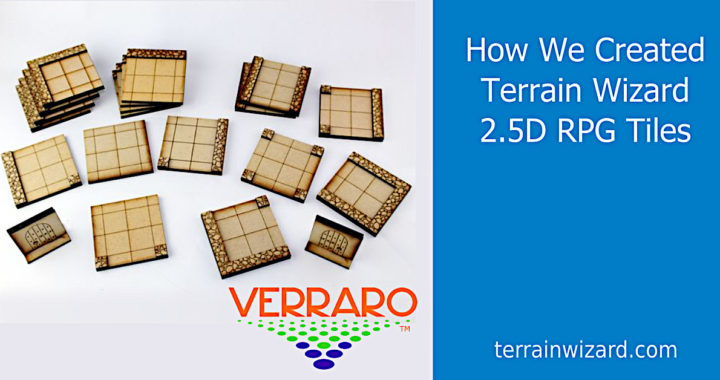
When thinking about terrain tiles, we researched all kinds of Role Playing Games (RPGs). Naturally, we went straight to Dungeons and Dragons (D&D). It created an entire industry with hundreds of games. To this day, it remains the most popular.
As we looked around, we saw that all kinds of terrain are available to gamers today. Some groups are LARPing, others have intricate life-like landscapes, yet others use minimalist hand-drawn maps.
So we wanted to understand the current state of RPG terrain before we committed to a direction.
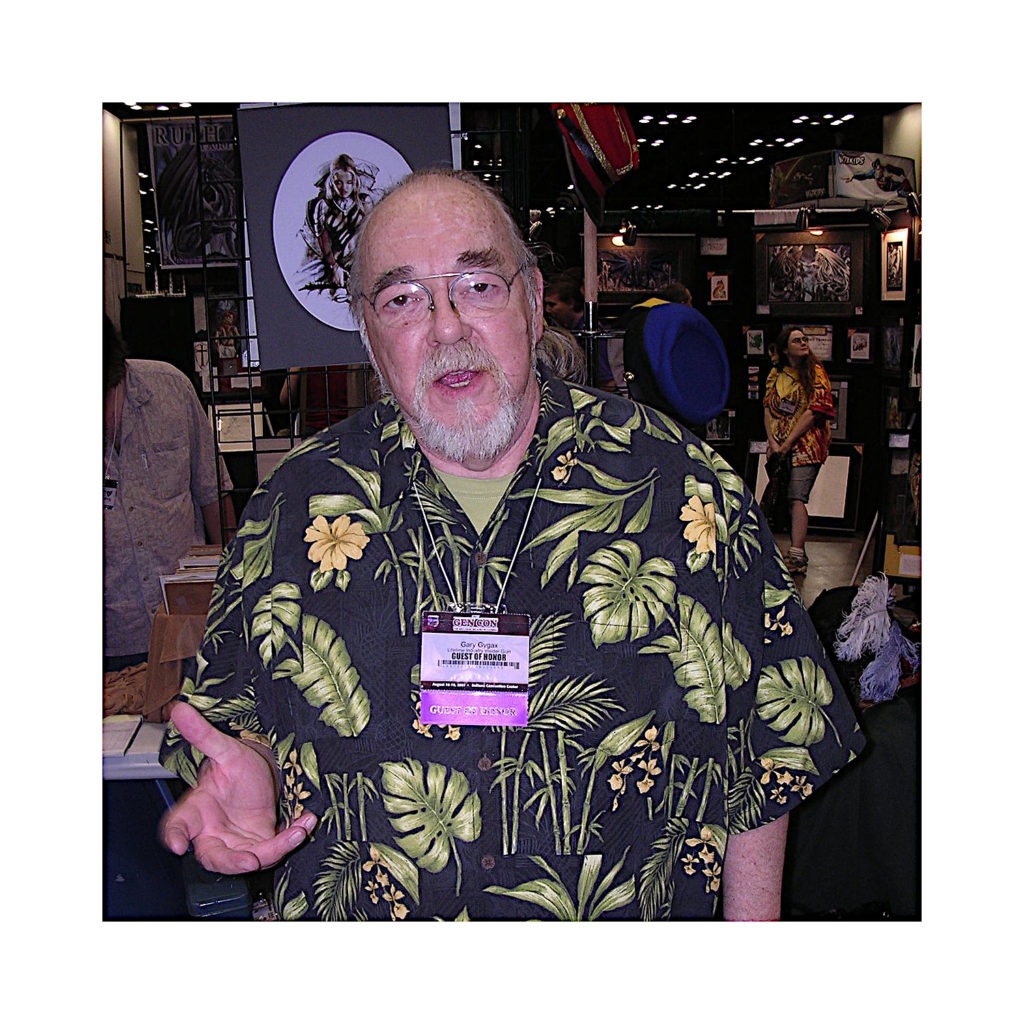
Gary And Dave Create The RPG
Gary Gygax and Dave Arneson created the modern RPG in 1974 when they published D&D. From that beginning, DMs have sought to help players visualize their encounters.
At first, DMs made hand-drawn maps on butcher’s paper. Things moved along slowly until Task Force Games printed Dungeon Tiles in 1980. The illustrated modular tileset lets the DM create maps easily.
Little progress was made until 1996 when Stefan Pokorny founded Dwarven Forge. He created hand-painted 3D modular dungeon tiles. The tiles were an immediate success. At last, gamers had found a better map.
The following year, 1997, The Wizards of the Coast(WotC) purchased TSR, which owned D&D. Over the next several years, WotC developed new versions.
In 2006 WotC started printing dungeon tiles. The first set of dungeon tiles, DT1, lets you create the dungeons and adventures you want to play. It included six tiles.
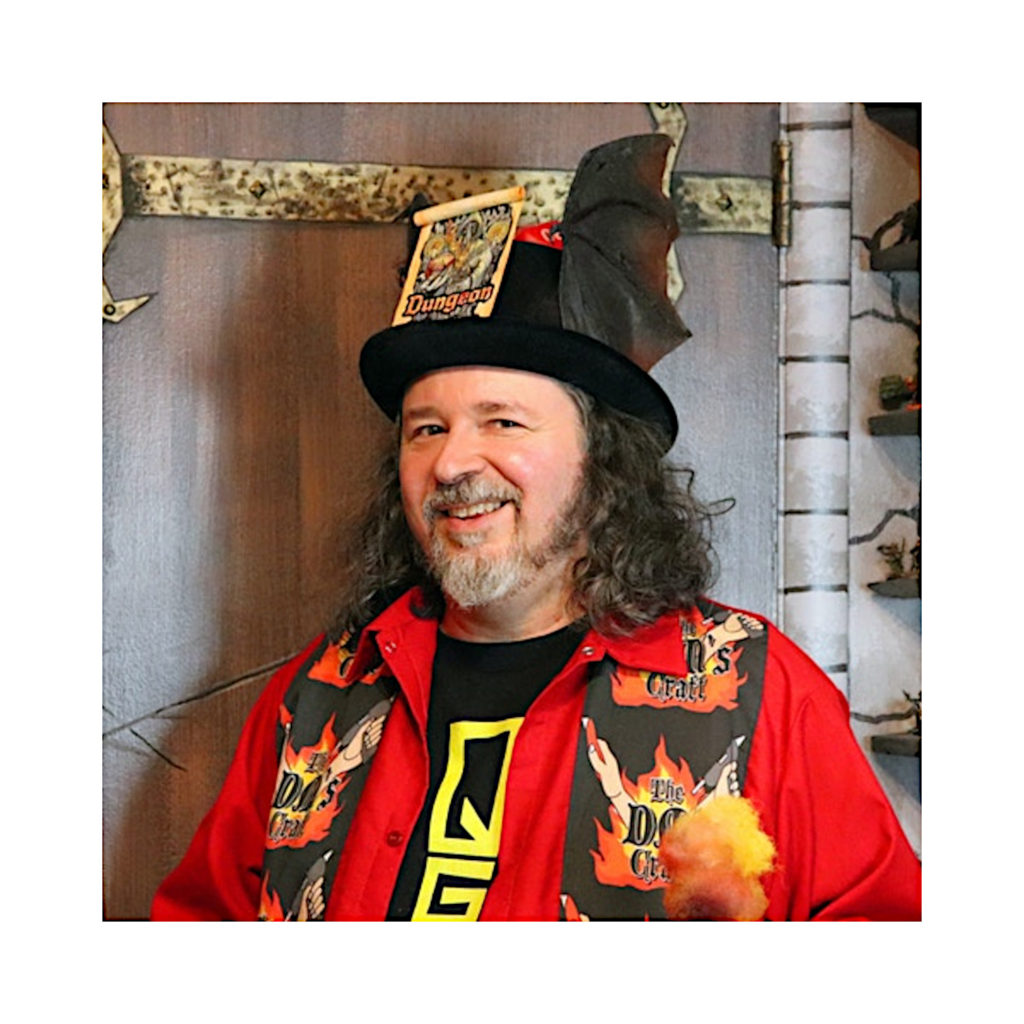
DM Scotty Creates 2.5D RPG Tiles
In 2012 Scotty McFarland, DM Scotty, was unhappy with simple grid maps. Both he and his players wanted something more visually appealing.
So he began looking for better options. Unfortunately, what he found were disappointing 3D terrain tiles. They block the DM’s view of the encounter. Everyone keeps knocking the tiles over as they play. While they are beautiful, the tilesets are heavy and expensive.
Scotty became obsessed with creating a better experience for his players. He reimagined the tiles. He introduced short walls, which let the DM see the encounter. Plus, they allow players to move without scattering the game pieces.
He called his new approach 2.5D. He even fixed the weight and cost problem by crafting his 2.5D RPG tiles from recycled corrugated paper.
If you watch DM Scotty’s YouTube channel at TheDMsCraft, you can see he enjoys crafting.
Unfortunately, you wind up with a mountain of unique terrain pieces.

DMG Modularizes 2.5D RPG Tiles
By 2013, DM Scotty’s 2.5D RPG tiles spread across the D&D world until they found their way to Australia. Gareth Q Barrett, DMG, would make the next significant improvement to the tileset.
He reduced the mountain of one-off 2.5D RPG tiles to reusable modules.
Gareth created an elegant grid system that lets you create reusable tiles. It is a significant advance because you can use a much smaller set of tiles to build an almost unlimited range of terrain. Plus, it works equally well with dungeons, caves, and sewers.
He is also a crafter who makes his terrain from corrugated paper. He started teaching everyone his methods on his Youtube Channel, The DMGinfo. You can learn how to make all kinds of modules and how to paint them.
Unfortunately, you still have to be a crafter to create the tiles. Plus, you need to spend a lot of time painting and finishing your tiles.
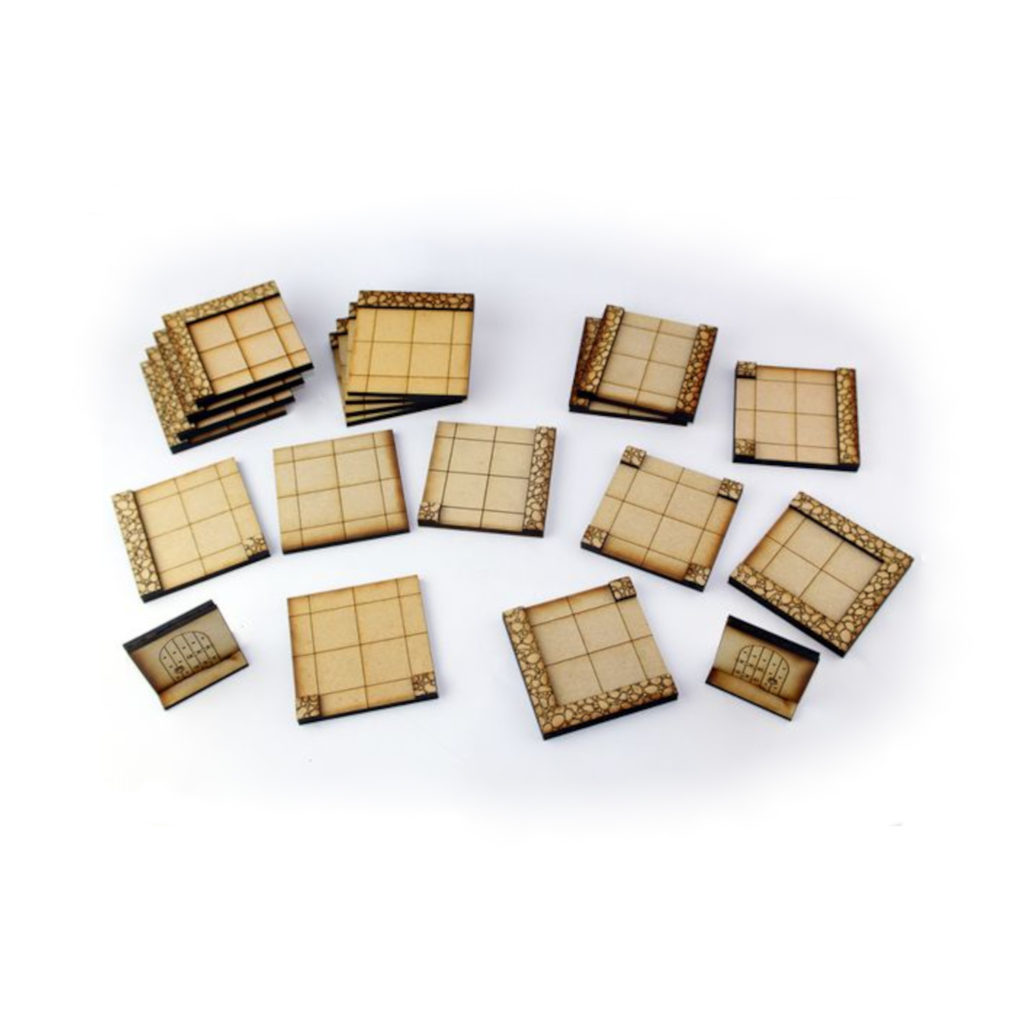
Terrain Wizard Lases MDF Tiles
Terrain Wizard entered the story in 2015. We had finished our research and were ready to make our first 2.5D RPG tiles.
We knew that the tiles had to allow everyone sitting at the table access to the dungeon. The DM had to be able to make changes to the layout quickly and easily. Plus, they couldn’t block anyone’s view of the play.
The tiles had to be lightweight and sturdy to store and transport them without fuss. Of course, they need to be modular since we all have limited storage space. In addition, they must be visually appealing because nobody wants an ugly layout.
We realized that medium-density fiberboard (MDF) was the way to go.
We used a laser to cut the modular tiles. It lets us etch a 1-inch (25mm) grid on the tiles for easy gameplay. We also cut and etched the 2.5D walls so you can play them right out of the bag.
Some DMs like to customize their terrain. Since MDF is a wood product, you can use readily available finishes.
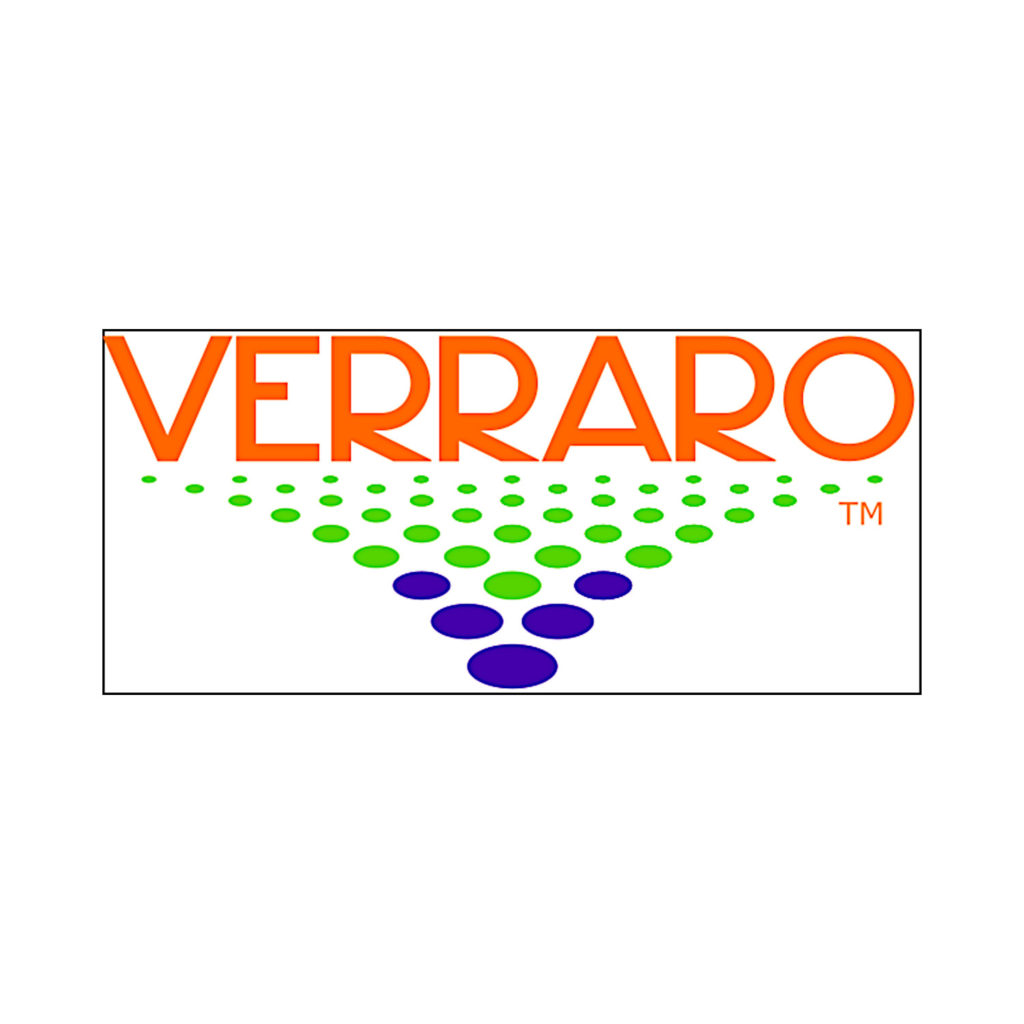
Terrain Wizard Release Verraro Tiles
After we playtested the MDF tiles, we made some minor corrections. Everyone received them well. So the next step was to put them in the store.
The marketing people came up with a brand name – Verraro. They also created a nice logo and packaging.
While everyone knows about Scotty’s 2.5D system, it is often confused with the video game 2.5D system. That is not surprising since he used the 2.5D gaming system as his inspiration.
We want to make sure we don’t get lost in the shuffle. Plus, we have some ideas that go beyond Scotty. So we describe our tiles as low profile.

Verraro Tiles Are A Failure
We put the new tiles in the store. They got lots of promotions. We were sure they would be a success. After all, they playtested well.
As the weeks went by without a single nibble, we started asking people what was happening.
The feedback was honest and brutal:
- They love low-profile modular terrain
- It is as ridiculously expensive as Dwarven Forge terrain
- The design is just not that good.
We found out the hard way, Verraro tiles are a failure.
Ouch!

Time To Start Over
Everyone likes low-profile modular terrain tiles. But the price has to be a lot lower than high-end 3-D terrain.
They need to look good. Nobody wants to be embarrassed. Most DMs want to design and manage encounters, not spend time crafting tiles.
We needed a sturdy, inexpensive replacement for MDF. Plus, we had to get good-looking tiles without crafting.
Foam – That’s The Ticket
Jeremy at Black Magic Craft showed us that foam insulation board makes durable terrain. Plus, you can spread your crafter’s wings. His designs are amazing.
But we needed to find a foam product that didn’t require crafting skills. Fortunately, there is something called foamcore board.
It works well as a replacement for MDF. It is the right thickness. Plus, It is inexpensive. The laminated paper faces make a reliable working surface.
Painting With A Printer
We still didn’t want to spend time crafting, so we kept looking. That’s when we learned about A J Pickett and The Mighty Gluestick.
He realized that he could paint with his printer. All he needed was images of dungeon floors and walls.
He could glue them to the foam board. A little cutting and some more glue yield good-looking tiles.
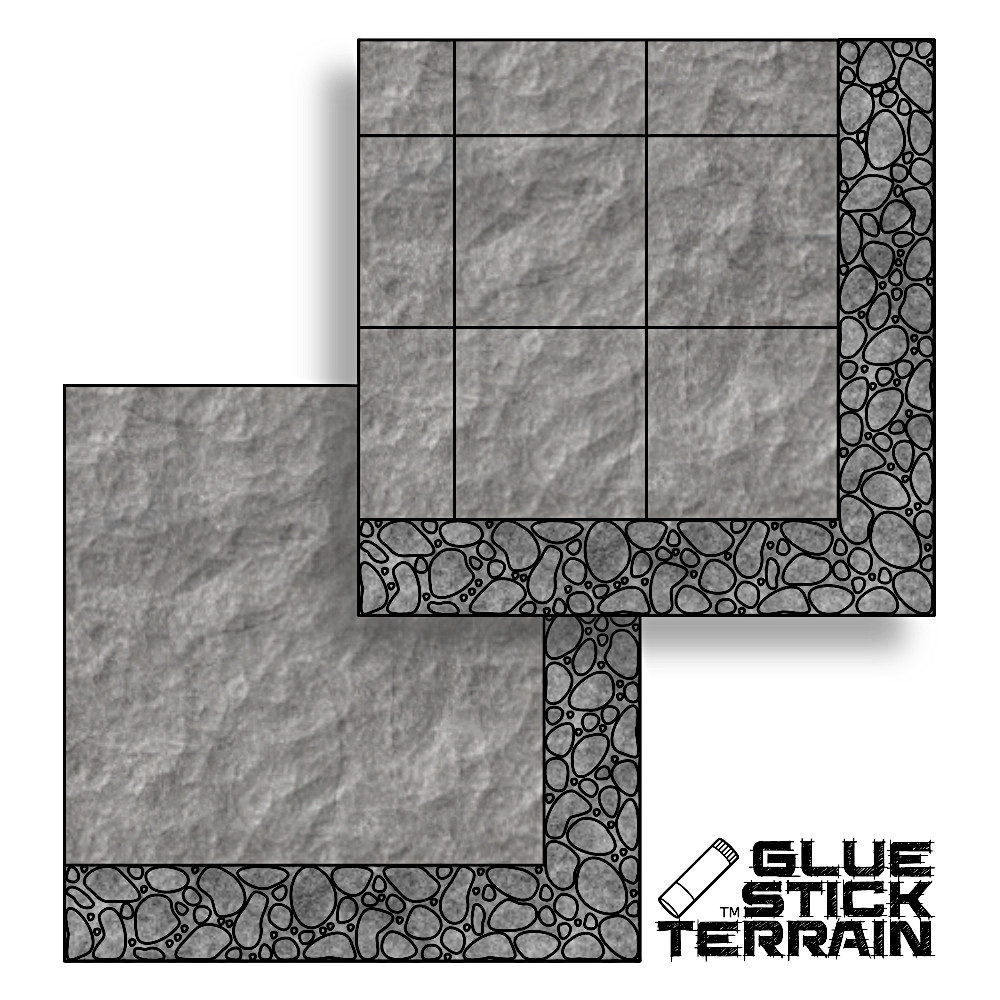
Glue Stick Terrain
We thought low-profile modular terrain should be realistic. So we made a seamless floor texture. We liked the laser-cut rubble wall. So we kept it.
The result is a set of printable modular low-profile terrain tiles.
You don’t need to be a crafter. You need a printer, a glue stick, a craft knife, and a backing board.
Free Is Good
We did a little market research. We found that nobody is making any money selling printable terrain.
Since we all passed econ 101, we know the correct product price is – FREE.
You Like Me, You Really Like Me
Once again, we put them in the store. And we promoted them.
First, we released a basic set of dungeon chamber tiles – 6 New Dungeon Terrain Tiles From Glue Stick Terrain.
Then we released a basic set of dungeon passages – 6 New Modular Passage Tiles From Glue Stick Terrain.
We got a steady stream of downloads. Success!

Glue Stick Terrain 2.0
The pandemic clobbered us too. People holed up. Groups stopped meeting. Noone downloaded tiles. It was awful.
Roll20 Opens Our Eyes
Like a large number of players, we found Roll20.
It is brilliant. They created a virtual tabletop for pen and paper TTRPGs. What got everyone stoked was the artwork.
After looking over all the eye candy, Ross at 2-Minute Tabletop inspired us to take a shot at some pen-and-paper-style terrain.
Comic Books Drive A New Style
We like comic books. OK, my mom thinks I need to grow up a bit.
If you know a little about comic book production, you know that the inker is the artist who draws the black lines. An inker sets the style for the book. The flatter is the artist who applies areas of flat color to the inked drawing. Finally, a colorist adds highlights and shading to complete the look.
Once we saw Ross’ work, we realized that by only inking and flatting, we created a new style for TTRPG modular terrain.
Rolling Out Version 2.0
Now, we are upgrading Glue Stick Terrain to version 2.0. Also, we are adding a bunch of new tiles in 3×1 and 3×2 base sizes. They give DMs a lot more control over the size and shapes of dungeons.
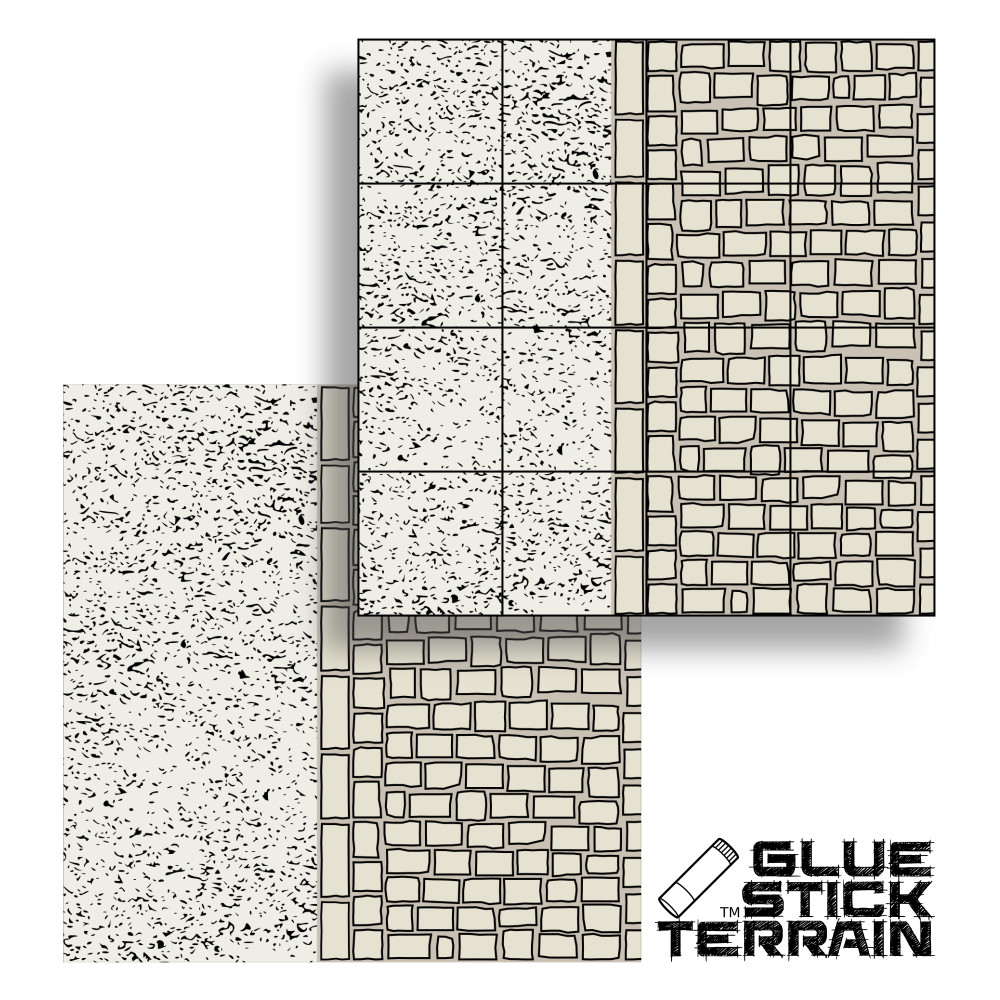
Our Take On Cityscape
Once the pandemic ran its course, we were able to get out. We started seeing people. Our downloads started to pick up. It felt like life was getting back to normal.
Like many other things, the pandemic changed our view of low-profile modular terrain. We created the inked/flatted version 2.0 tiles.
Now we could expand beyond simple dungeons.
Urban Adventuring Terrain
We spend a lot of time looking at other people’s work. It inspires us. And it gives us something to shoot for.
When we cracked the cover of Cityscape, An Essential Guide To Urban Adventuring, it was perfect for the new style.
So we went looking for artists who had created the kind of modular terrain we could use as an inspiration.
We found that inspiration in Battlin’ Barrow Gaming. His take on the alleys, streets, and avenues is an improved version of Dwarven Forge’s street and alley tiles.
Low-profile Buildings
There are even more changes in the pipeline. We have some buildings ‘in white.’ We developed a new construction process that lets us create low-profile multistory buildings.
Part of our development process is to put things ‘in white.’ New products are developed using white foamcore board. Any details are hand-drawn with a Pilot Fineliner.
Once a concept is worked out, we ink and flat it. Then we create a set of instructions.
Explore Further
The Glue Stick Terrain Guide To Low-Profile RPG Terrain is the place to explore low-profile modular terrain.
